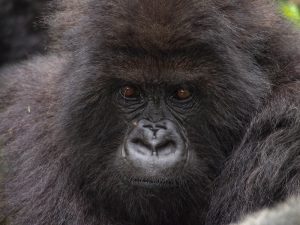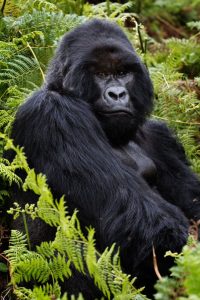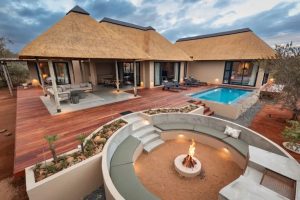Uganda’s raw, untamed beauty makes it one of the most cinematic countries in Africa. From the mist-shrouded mountains of Bwindi to the wide-open savannahs of Murchison Falls and the lush rainforests of Kibale, this East African gem offers filmmakers unmatched diversity in both landscape and wildlife. How to Plan a Filming Safari in Uganda
Whether you’re planning a wildlife documentary, travel feature, commercial project, or an independent film, Uganda provides incredible backdrops, rare species, and a supportive production environment if you plan it right. This guide will walk you through the essential steps to plan a successful filming safari in Uganda. How to Plan a Filming Safari in Uganda
Why Choose Uganda for Filming?
Uganda is often called the “Pearl of Africa” for a reason. It offers a rare mix of ecosystems in a compact geographic area, making it possible to film volcanoes, jungles, wetlands, and savannahs all within a single trip.
Key filming highlights include:
- Mountain gorillas in Bwindi and Mgahinga
- Chimpanzees in Kibale and Budongo Forest
- Shoebills in Mabamba Swamp
- Big game in Queen Elizabeth and Murchison Falls National Parks
- Stunning landscapes like the Rwenzori Mountains and Lake Bunyonyi
Additionally, Uganda has a growing film-friendly infrastructure and a government that encourages responsible media production.
Step 1: Define Your Filming Goals
Before you do anything else, be clear on your objectives:
- Are you filming wildlife, landscapes, or people?
- Do you need aerial drone footage?
- Are you creating a documentary, travel series, or a promotional campaign?
Your goals will determine what equipment, locations, permits, and crew you’ll need. It will also impact the type of support services to arrange in advance. How to Plan a Filming Safari in Uganda
Step 2: Choose the Right Filming Locations
Uganda’s filming safari options are broad. Here are some top locations for different film themes:
1. Wildlife Documentaries
- Bwindi Impenetrable National Park – For gorilla behavior and dense jungle visuals
- Murchison Falls National Park – Big game, waterfalls, river scenes
- Queen Elizabeth National Park – Tree-climbing lions, crater lakes, wetland birds
- Kidepo Valley National Park – Remote savannah, authentic tribal cultures
2. Birding Films
- Mabamba Swamp – Shoebill stork and aquatic birds
- Semuliki National Park – Rare lowland forest species
3. Cultural and Community Filming
- Karamoja region – Indigenous cultures and traditional lifestyles
- Lake Bunyonyi – Canoe scenes, terraced hills, and island villages
4. Scenic and Landscape Films
- Rwenzori Mountains – Snow-capped peaks and glacier-fed valleys
- Mount Elgon – Unique geology and waterfalls
- Lake Victoria and Ssese Islands – Freshwater coastlines and fishing life
Step 3: Obtain Film Permits and Legal Approvals
Uganda is welcoming to filmmakers, but all commercial filming requires permits from the Uganda Media Council and Uganda Wildlife Authority (UWA) if filming inside national parks.
You will need:
- A film license from the Uganda Media Council
- UWA filming permit (if shooting in parks or reserves)
- Location access letters (for cultural or community filming)
- Work permits for foreign crew (if staying beyond 30 days)
- Drone permits from the Uganda Civil Aviation Authority (if using drones)
Film permit applications should be submitted at least 4–8 weeks in advance. Delays can occur if the paperwork is incomplete, so work with a registered local fixer or production coordinator who knows the process.
Step 4: Work with a Local Fixer or Production Partner
A professional Ugandan fixer can make or break your shoot. They will:
- Help you obtain all required permits
- Arrange transportation and accommodation
- Act as translator or liaison with communities
- Provide local crew, scouts, and security where needed
- Facilitate equipment rental and clearance through customs
You may also need a media clearance agent to assist with customs and temporary importation of film gear.
Step 5: Select the Right Season for Filming
Uganda’s weather is tropical and relatively stable, but understanding the seasons helps with logistics and lighting.
Dry Seasons (best for wildlife visibility and equipment transport):
- June to August
- December to February
Wet Seasons (lush scenery and fewer tourists):
- March to May
- September to November
Wildlife remains active year-round, but roads can become muddy during rainy months, especially in forested areas. Plan your equipment protection accordingly.
Step 6: Plan Your Logistics
A filming safari involves moving crew, gear, and supplies across sometimes remote areas. Be meticulous with logistics.
Transport:
- 4×4 safari vehicles with rooftop filming hatches are ideal
- For remote regions, consider chartering domestic flights
- Boats or canoes may be required in swamp or lake areas
Accommodation:
- Book eco-lodges or tented camps near filming locations
- Some high-end lodges offer camera storage rooms and charging stations
Food and Supplies:
- Catered options available at lodges
- Pack non-perishables for remote locations
Step 7: Prepare the Right Equipment
Filming in the wild requires durable, flexible gear. Consider the following:
- Cameras: Lightweight, weather-resistant cinema cameras or DSLR/mirrorless systems
- Lenses: Telephoto for wildlife, wide-angle for landscapes, macro for detail shots
- Tripods and Gimbals: For stability and cinematic motion
- Drones: Must be pre-cleared and follow airspace laws
- Audio Gear: Directional microphones and recorders
- Power: Solar chargers, power banks, and voltage converters
- Waterproofing: Dry bags, lens wipes, silica gel for humidity
Step 8: Respect Wildlife and Cultural Ethics
Uganda is deeply connected to its natural and cultural heritage. Filmmakers are expected to follow ethical and conservation-minded practices:
- Keep a safe distance from wildlife
- Do not interfere with animal behavior for better shots
- Use local guides who understand animal movements and culture
- Gain consent before filming local people or community spaces
- Share footage or benefits with communities if filming in their areas
Step 9: Budgeting Your Filming Safari
Budgeting for a filming safari varies depending on crew size, gear, and scope. Include:
- Permit fees (typically $200–600 per park/day)
- Fixer/production coordinator fees
- Accommodation and food
- Vehicle and fuel
- Crew and guide tips
- Equipment rental and customs deposits
- Contingency for weather or technical delays
Having a flexible filming window helps reduce costs by avoiding rushed shooting days.
Step 10: Post-Production Planning
While Uganda does have basic editing and internet services, it’s often best to handle post-production offsite unless you’re working on short-turnaround content. However, you may consider:
- Offloading daily footage to external drives
- Backups to cloud (if internet allows)
- Brief edits for social media teasers or sponsor previews
Ensure all your footage is stored safely before departure.
Final Thoughts
A filming safari in Uganda offers a unique chance to capture Africa’s raw beauty, charismatic wildlife, and vibrant cultures on camera. But filming here isn’t just about the footage—it’s about building local connections, respecting the environment, and telling authentic stories.
With proper planning, permits, a good local fixer, and a flexible but focused approach, Uganda can be the perfect location for your next filming project in 2025, 2026, or 2027.
Need help organizing a professional filming safari in Uganda? I can help you customize a full itinerary, connect you with local fixers, and walk you through the permit process step-by-step.
Let’s bring your vision to life, frame by frame.




